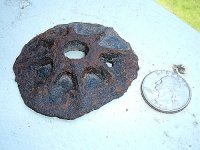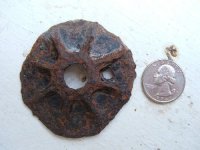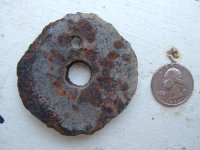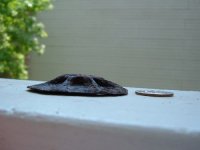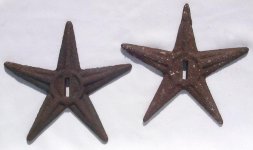chong2
Bronze Member
found the other day detectin, kinda crude, actuall found 2 only picked up one, dunno why, shoulda got both, i have the location jotted down tho. i was thinking doorbell button cover, but i dont think door bells were around that long ago, who knows
CHONG

CHONG


